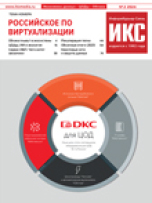| Рубрикатор |  |
 |
| Все новости |  |
World News |  |
 |
3GPP Mobile Broadband Sees 81% Annual Growth in Western Hemisphere
| 28 мая 2010 |
The 3GPP mobile broadband technology (UMTS-HSPA) realized growth of 81 percent throughout the Americas in the year ending March 2010, reports 3G Americas, a wireless industry trade association.
Propelled by an increase in 3G network deployments, upgrades to HSPA networks, mobile broadband subscriptions, netbooks and smartphones, operators are reporting significant growth in revenue from data services.
"Mobile broadband is growing at an explosive rate throughout the Western Hemisphere as the investment by operators and manufacturers in networks and devices is delivering advanced services to customers," said Chris Pearson, President of 3G Americas. "This is evidenced by the strong growth of mobile broadband subscriptions in North, Central and South America."
Based upon subscription data from Informa Telecoms & Media, with all other research obtained by 3G Americas, the organization provides a summary of growth in the region.
Western Hemisphere
Total 3GPP subscriptions (GSM-HSPA) in the Western Hemisphere reached 621.7 million as of March 2010 and captured 74 percent share of market. In the first quarter alone, there were 22.1 million new subscriptions reported in the Western Hemisphere.
In the 12 months ending March 2010, there were 33.4 million new UMTS-HSPA 3GPP mobile broadband connections for a total of nearly 75 million 3G subscribers, which represented 81 percent growth in the region on 64 commercial UMTS-HSPA networks.
Latin America
The Latin America and Caribbean region continued to see a dramatic increase in market share for 3GPP technologies, rising to 92 percent at the end of the first quarter of 2010. This was supported by the addition of 20 million new 3GPP technology connections, of which 5 million were UMTS-HSPA connections. In the 12 months ending March 2010, 3GPP technologies added a total of 68.6 new connections, including 12.6 million UMTS-HSPA subscriptions. Total 3GPP subscriptions (GSM-HSPA) now equal 486 million, including 19 million UMTS-HSPA subscriptions.
"Mobile broadband adoption has contributed to the increase in overall broadband penetration in Latin America," said Erasmo Rojas, Director of Latin America and the Caribbean for 3G Americas. "The rising market share and the addition of 20 million new connections in the first quarter of 2010 clearly indicate an opportunity for massive growth in the region that already represents 10 percent of worldwide subscriptions."
Latin American operators have shifted their focus from voice-centric (2G) services to data-centric (3G) services by addressing data value-added services and higher value users. For example, Latin American operator Telefуnica reported data services to be its key growth driver for the first quarter of 2010, reporting positive growth rates of 43.6 percent year-on-year. Data service revenues accounted for 20.6 percent of total mobile revenues in the first quarter, a 5.3 percent increase year-on-year. Telefуnica's mobile broadband client base increased by 2.5 times in the 12 months to reach almost 5 million at 1Q 2010.
Amйrica Mуvil has deployed 3G HSPA in all 17 countries where they operate in Latin America and the Caribbean keeping their focus on higher value users through advanced value-added services. Data revenues continued to grow rapidly and have reached an average of 21.3 percent of services revenues in the region. In Mexico, during the first quarter of 2010, Amйrica Mуvil reported an increase in equipment revenues of 24.1 percent and service revenues rising 7.9 percent on the back of data revenues that soared 28.7 percent as the demand for data services continues to take hold.
Today, there are 56 UMTS-HSPA networks commercially deployed in 24 countries throughout Latin America and the Caribbean.
USA and Canada
In the U.S. and Canada, 3GPP technologies added a net 2 million new subscribers in the first quarter of 2010 and included in this number were 5 million new mobile broadband (UMTS-HSPA) connections.
Today, there are there are 8 commercially deployed UMTS-HSPA networks in the U.S. and Canada.
According to industry analyst Chetan Sharma, in the U.S., where all four national wireless service providers are within the top 10 global mobile data operators, average industry percentage contribution of data to overall ARPU crossed the 30 percent mark in 1Q 2010 and is likely to get past 35 percent by the end of the year.
With recent deployments of HSPA and the rollout of HSPA+, T-Mobile USA experienced the highest percentage of growth amongst its peers in mobile data service revenues for the quarter. In its 1Q 2010 earnings statement, T-Mobile reported 5.2 million customers were using 3G-capable converged devices on the T-Mobile USA network, an increase of 33 percent from 3.9 million customers as of the fourth quarter of 2009 and a significant increase from 1.5 million customers as of the first quarter of 2009.
AT&T experienced 29.8 percent growth in wireless data revenues in 1Q 2010, up $947 million, versus the year-earlier quarter to $4.1 billion. AT&T had a 3.3 million net increase in 3G postpaid integrated wireless devices on the network to reach 26.8 million, more than double the company's year-earlier total.
Rogers' data revenue growth of 40 percent in the 1Q 2010 comprised 26 percent of wireless network revenue and was supported by the activation and upgrade of approximately 348,000 additional smartphone devices, of which approximately 35 percent were for new wireless subscribers. This resulted in subscribers with smartphones representing 33 percent of the overall postpaid subscriber base at end of 1Q 2010, up from 23 percent at the end of 1Q 2009 and generating ARPU nearly twice that of voice-only subscribers.
Global
At the first quarter of this year, there were 4.3 billion 3GPP connections worldwide, with 3GPP mobile broadband subscriptions nearing the half billion point at 493 million UMTS-HSPA connections, a number that continues to grow and represented 11.4 percent of all subscriptions.
Worldwide, 346 commercial networks in 148 countries offer UMTS-HSPA.
The 3GPP technology roadmap will continue to evolve with the further evolution to LTE. Nearly 100 operators have expressed anticipated deployments of 3GPP LTE technology, with the first networks already commercially launched by TeliaSonera in Sweden and Finland. There are an additional 60 anticipated announcements regarding LTE by operators worldwide.
Источник: Cellular news
Читайте также:
Опубликован перечень поручений по итогам заседания Совета по стратегическому развитию и нацпроектам
Решения N3COM прошли тестирование на сети LTE ОАО «РЖД»
МТС начинает отключать старые сети 3G
билайн завершил масштабную модернизацию сети в Московской области
МегаФон импортозаместил связь для экстренных служб и бизнеса

















Оставить свой комментарий:
Комментарии по материалу
Данный материал еще не комментировался.